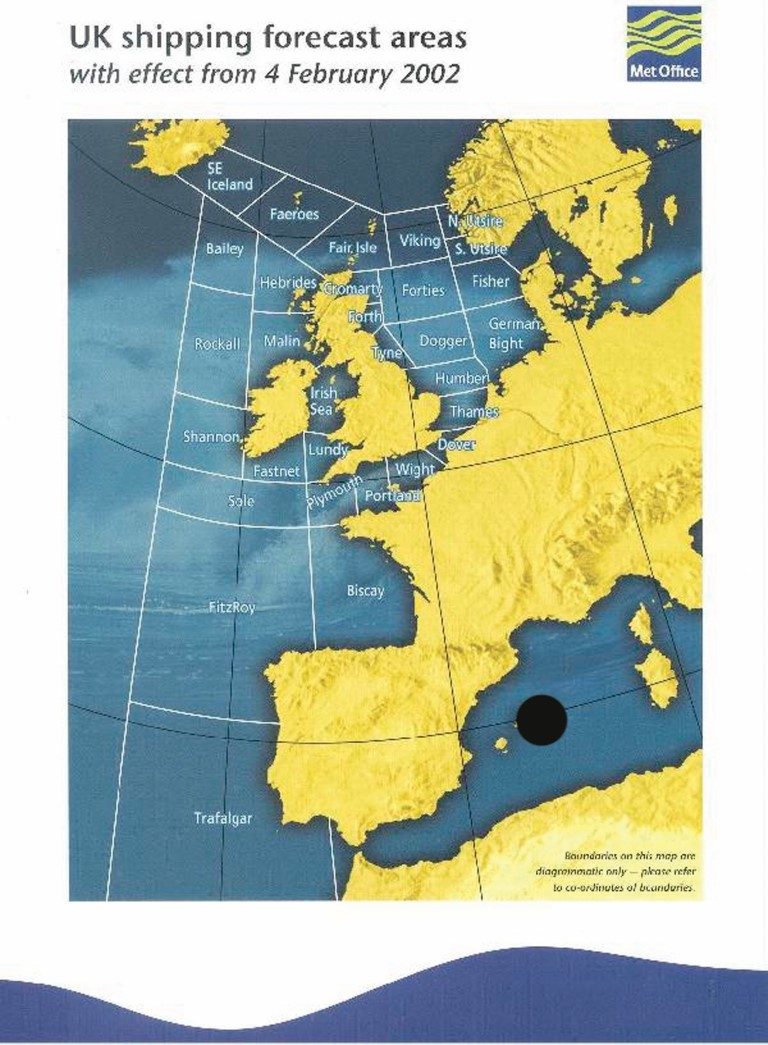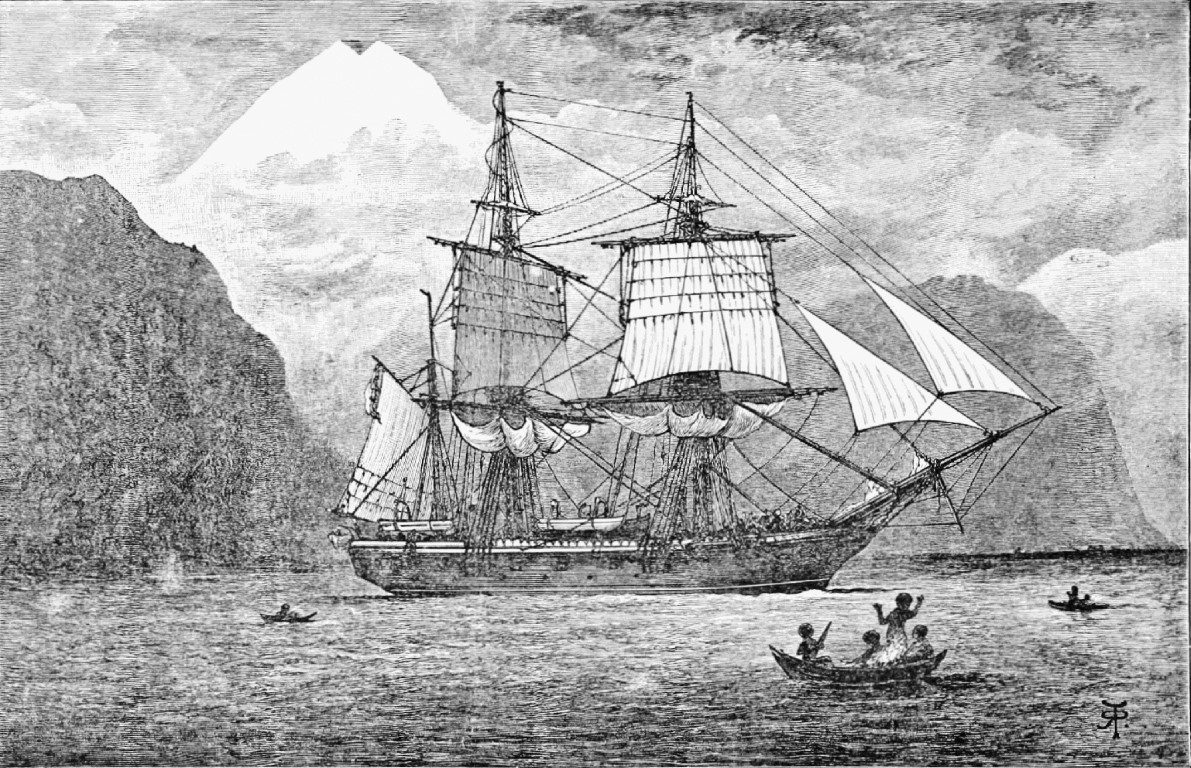

Whether to put to sea is often dependent on the weather and for more than 100 years the voice of reason on the UK airwaves has been the Shipping Forecast.
The Shipping Forecast announcer warned of “a Force 9 westerly gale later for Fair Isle” in a not unsympathetic male voice, as we wearily leaned against the kitchen table near the radio. It had been a long day at sea working our creels and pulling them further off the rocky coast, but now more toil lay ahead.
For we knew intimately the parlance of the BBC2 broadcaster’s words and “later” meant the gale would hit us within a day. This required an early start to venture out into the Pentland Firth in growing seas to recover our fleet of creels; then battling home with a dangerously overloaded, top-heavy boat with low freeboard.

It took a whole winter’s work to build a fleet of creels but only a day to destroy it, should we get the weather wrong. And back in the 1970s the Shipping Forecast was our best source of weather information. So the English announcer in faraway Bracknell, London had our undivided attention in times like these.
By September the Arctic winds began to blow across the 500mile stretch of north Atlantic between us and Iceland, curving into wild westerlies that slammed into the far north of Scotland. It was also the time the lobsters and crabs were in the warmer, shallower waters to breed (our catchment area) – which meant gales at this time of the season were the most destructive.
Our other nearby waterway, the smaller North Sea to the east, brought equally bad weather with the added danger of fog. To warn us the announcer would declare “Visibility – very poor” which meant less than 1,000 yards.
These words – and many more that comprised the specific vocabulary of the Shipping Forecast – were ingrained in my young brain, along with the wistful music Sailing By that played on the late-night broadcast. Loved by sailors and landlubbers alike, the Shipping Forecast often heralded very different outcomes for these disparate groups of Brits.
THE SHIPPING FORECAST
The Shipping Forecast divided northern European waters into 31 gridded areas and our region was Fair Isle. It had a large percentage of gales for most of the year because of its high latitude (59o). This latitude was similar to southern Greenland to our west and, to the east across 270 miles of North Sea, Stavanger in Norway.
The Shipping Forecast’s history is fascinating, part of a science that shaped world events – such as WWII’s D-Day landings on the beaches of Normandy. Arguably the most important weather forecast of all time had to be issued for an event that involved 160,000 seaborne troops and 7,000 ships.

In charge of this was a tall Scotsman named Dr James Stagg, the country’s leading civilian weather expert who, under immense pressure from conflicting weather reporting groups, persuaded General Eisenhower to postpone the landing from the 5th to 6th June 1944. Stagg’s meteorological knowledge only went back to the previous century and even by 1944 the weather could only be predicted for a few days ahead.
Until the 19th century a real knowledge of meteorology didn’t exist – despite valiant attempts as far back as 340BC when Aristotle published his flawed Meteorologica – so major events such as the wrecking of the Spanish Armada fleet might have been very different with better weather information.
Unsurprisingly, a seafarer was one of meteorology’s major pioneers: Vice-Admiral Robert Fitzroy, the captain of the HMS Beagle – the ship famous for carrying naturalist Charles Darwin around the world on a five-year voyage of discovery, allowing him to formulate his theory of natural selection. But Fitzroy himself was also a brilliant scientist.

Rather than resting on the laurels of his aristocratic lineage (dating back to King Charles II), the 12-year old Fitzroy started naval college in 1818 and graduated with full marks at 17. He then went on to spend most of his young life at sea. By 23 Fitzroy was a seasoned sailor and commander of men, but like all mortals he had his flaws. He was an absolute perfectionist who didn’t suffer fools, but he was also plagued by chronic depression.
Command was intended as a solitary undertaking in the Royal Navy, where the captain was expected to be an absolute and sole ruler of the ship. So for his upcoming voyage he sought an amenable and gentlemanly companion to ward off his depression and was recommended Darwin. Darwin was a colourful young man who flunked Edinburgh University but had a known interest in the natural world and more importantly, influential family connections.

Fitzroy’s mission aboard the 90-foot, 11-year-old brig Beagle was hydrography – charting South America to improve Britain’s trade routes. His superior was an Irishman, none other than Sir Francis Beaufort, who guided the young Fitzroy on weather matters and of course went on to write the Beaufort Scale of wind measurement – that ‘Force 9’ gale mentioned at the beginning of this story.
During the five-year circumnavigation (1831-1836) and detailed charting of Tierra Del Fuego, Fitzroy encountered all kinds of weather – from near catastrophic katabatic downdrafts off the Andes to the fast-moving Pampero winds that on one occasion nearly capsized the small brig. This class of ship was nicknamed the ‘coffin brig’ because of its instability – 26 of the 107 built were lost at sea.
In his detailed diary – that was published in several volumes but greatly overshadowed by Darwin’s more eloquent and sensational writings – Fitzroy lambastes himself for not interpreting his barometer better before that particular storm.
Barometric pressure and its weather effects became an important part of Fitzroy’s theories. Similar work was happening around the world, most prominently by Dutchman Christoph Buys Ballot. He formulated the famous Buys Ballot’s Law: by standing with your back to the wind in the northern hemisphere there will be high pressure on your right and low pressure (with stronger winds) on your left; and vice versa for the southern hemisphere.

Fitzroy’s work eventually led the British Government (in 1860) to install so-called ‘Fitzroy Barometers’ in major UK ports, along with a user guide from the captain himself. One still stands only a few miles from my old home in John O’ Groats at the port of Stromness in the Orkney Islands.
THE MET MEN
Fitzroy’s Beagle voyage and experience of weather at sea on other ships led the dashing young captain to write his book – The Weather Book: A Manual of Practical Meteorology – after the voyage. Eventually he went on to establish the Met Office in the UK when he was appointed Meteorological Statist to the Board of Trade in 1854 with a staff of three.
Data for the new organisation was gathered by ships’ captains from basic barometers and wind instruments provided by Fitzroy’s new department. This led to an early form of synoptic chart and, even more controversially, the study of sunspots in determining the weather – a part of meteorology that continues to be debated to this day.

Fitzroy’s weather book also contained symbols to warn of gales – a series of triangles and cylinders – that would be deployed in ports around the world and was still in use when I was commercial fishing in Scotland in the 1970s.
While on the Beagle Fitzroy also, daringly, took the liberty to change some nautical terms: replacing the confusing ‘larboard’ with port as it sounded too like ‘starboard’ when shouted in a gale, and even coining the now ubiquitous term ‘dinghy’. Compass deviation caused by iron on ships was another topic he tackled.
But most famously of all, Fitzroy coined the term ‘forecast’, something that in the 1850s was considered blasphemous. Fitzroy realised that weather came from somewhere and went somewhere – so having advance warning of this by getting signals from the origin was the way forward. The solution was the 100-year old French invention called the telegraph.

For instance, a signal station where most of the prevailing winds came from in England – the south west coast of Cornwall – could allow a message to be sent eastward to warn the fleet at Portsmouth. Huge shipping losses was the impetus, including the loss of fishing fleets, so connecting this system to all the major ports followed and the Times newspaper published these daily forecasts.
Most famously, one day while relaxing at home with his family in London, Fitzroy was called upon by an emissary from Queen Victoria, asking if it was safe for her majesty to voyage over to the Isle of Wight for the day.
THE FISHERMAN’S FRIEND
But these weather forecasts remained controversial and were especially unpopular with owners of the fishing fleets who didn’t want their fishermen languishing in port needlessly when an incorrect forecast was issued. These ‘mistakes’ occurred about 40% of the time – so the stress levels on Fitzroy and his small department at the Met Office grew. The stress, along with his personal financial worries, eventually brought back his manic depression and eventual suicide in 1865, after which his office was disbanded.
When news of the end of Fitzroy’s forecasts reached them, fishermen rioted. Finally, some two years after his death the Met Office and forecasts were reinstated to create a legacy to which many seafarers owe their lives.

These, and other factors about Captain Fitzroy were long forgotten until 2002 when something very controversial happened to our beloved Shipping Forecast. A European Parliamentary directive required a change of name for the southern section of the Shipping Forecast (Finisterre) because it was also used by Spanish meteorologists.
Again, near riots ensued in the UK among seafarers and nostalgic landlubbers – until the Met Office had the last word and gave this sea area a new name: Fitzroy.




